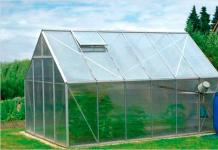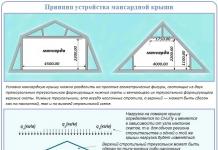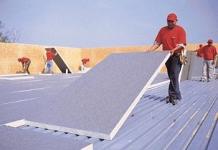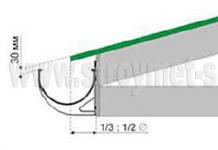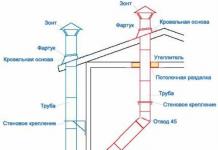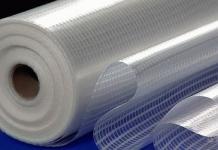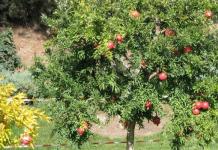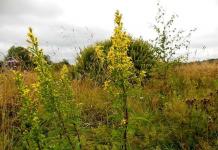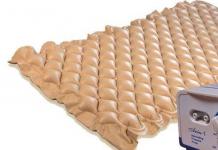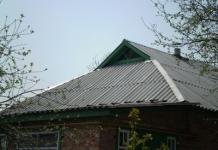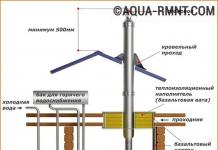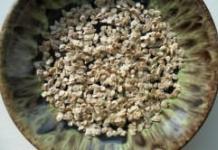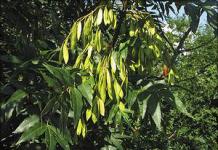Potato: seed and vegetative propagation
Most questions from potato growers arise from a misunderstanding of the methods of potato propagation.
Potatoes reproduce by seeds and vegetatively. And these methods of reproduction do not affect each other in any way.
Vegetative and seed reproduction is studied in the school course of botany. Gardeners and lovers of ornamental plants are well aware of these types of reproduction. But for some reason, this knowledge is mostly forgotten by amateur potato growers.
Let us briefly recall these methods of reproduction.
Seed propagation is carried out by sowing botanical seeds. Seeds are formed in the fruit of the potato. The basis of seed reproduction is the ability of plants to form a new organism due to the fusion of parent germ cells in a flower. This is a SEXUAL way of reproduction, for which the presence of a flower with male and female organs is mandatory.
Vegetative propagation is the process of reproduction of new plants from parts of the mother plant. Vegetative reproduction is carried out with the participation of only cells, tissues and organs of the parent (mother) plant. The basis of vegetative reproduction is regeneration - the ability of plants to restore lost organs and tissues. This is an Asexual reproduction method that does not require flowers, but only a part of the mother plant - tubers.
Vegetative reproduction is inherent not only in potatoes, so many plants reproduce. Only the organs of vegetative reproduction can be different. For example, strawberries have a mustache. Gladiolus have babies. Plums have shoots.
It is important to understand that with repeated seed propagation, we get NEW plants with each sowing. With vegetative propagation - EXTEND THE LIFE OF THE MOTHER PLANT.
Vegetative propagation of potatoes can be not only through planting tubers. For example, by rooting cuttings (parts of the stem with leaves) cut from the mother plant, we do the same thing as when planting tubers - we prolong the life of the mother plant.
When trying to explain issues related to potato propagation, I always say that the tuber should be taken as a cutting. The fact is that a tuber is nothing more than a heavily thickened underground shoot. If I may say so, then the tuber is a “fat stalk”.
Let's get back to questions about flowers and flowering.
 “The potatoes did not bloom this year. Is it possible to take seed tubers from him? “The Colorado potato beetle ate the flowers. Is it possible to take seed tubers from him? Of course you can. The presence or absence of flowers does not affect the mother plant in any way, and therefore all its parts, including tubers and cuttings. Everything that happens in a flower is continued in fruits - potato berries. And for tubers, these processes do not matter - tubers do not need fertilization. Tubers are NOT SEEDS of the potato plant, but part of it.
“The potatoes did not bloom this year. Is it possible to take seed tubers from him? “The Colorado potato beetle ate the flowers. Is it possible to take seed tubers from him? Of course you can. The presence or absence of flowers does not affect the mother plant in any way, and therefore all its parts, including tubers and cuttings. Everything that happens in a flower is continued in fruits - potato berries. And for tubers, these processes do not matter - tubers do not need fertilization. Tubers are NOT SEEDS of the potato plant, but part of it.
I often met questions of such a nature: “Sentry!!! Potatoes did not bloom again this year. We will be left without a crop again! Tell me what to do to make the potatoes bloom? I patiently explained that the absence of flowers did not reduce the yield. And he often received an answer like: “Last year there were flowers - there was a big harvest. And the year before last there were no flowers, and there was no harvest. And you say that the flowers have nothing to do with it ... "Some gardeners are very observant, and some" grandmothers say. So who is right? Here the observation is correct, but the conclusions are incorrect.
Example: the driver saw that the "low oil pressure" light came on, but ignored the signal. Engine jammed. Is there a connection between the light bulb and the engine failure? Of course, there is: the light bulb caught fire - the engine broke down. But does the light bulb have anything to do with engine failure? No, it doesn't. The light bulb just showed that something was wrong with the engine. And the real cause of the breakdown is low oil pressure.
The same is true in our case. The absence or fall of flowers only “reports” that there is some reason that can reduce the yield of potatoes. For example, drought, high soil temperature (above 29 degrees), not uncommon in the south of the Omsk region, is the reason for stopping the development of potatoes. The tubers stop growing and the flowers fall off. The reason may also be poor soil and other adverse environmental factors. In all these cases, the flowers are not the cause of the decline in yield, but only such a victim of circumstances, like the tubers.
It is worth bearing in mind that most modern varieties do not bloom, or shed flowers under any conditions.
“Is it possible to plant different varieties of potatoes next to each other? They won't cross-pollinate?" You can plant nearby. Let's imagine that the potato is pollinated - that is, another variety is pollinated by one variety. What will happen to our tubers? Absolutely nothing. Pollination will occur in the flower, resulting in hybrid seeds in the fruits (berries). And then what? What will you do with the berries? If you plant seeds from berries, then you should think about pollination. But you are not planting seeds, but tubers - part of the mother plant. How will the leaves and trunks of the plant change, on which the cross-pollination of flowers has occurred? No way. Because the leaves and stems are part of the mother plant. The tubers are the same part, with pollination within the same variety, with cross-pollination, and in the absence of pollination - the tubers have been and will remain unchanged.
If a white woman conceives from a representative of the African continent, then the baby will most likely be black. But the woman will remain white. Fertilization (re-pollination) affects the offspring (seeds in berries), but does not affect the mother organism (mother plant, including tubers, stems, etc.) With further reproduction by tubers, we do not care if cross-pollination has occurred or not.
And, nevertheless, many times, literally foaming at the mouth, they proved to me that “the potato has become pollinated”. And they made arguments. For example: “Here, a neighbor planted some new variety, now my potatoes have become pollinated, they will give birth to one little thing.” Pollination, as we have already understood, has nothing to do with it. In fact, there is a banal accumulation of diseases, viral infections. At the end of the growing season of a potato plant, nutrients flow from the trunks and stems into the tubers. In the same way, some of the viruses get into the tubers if the plant is infected. Just as a person acquires more and more diseases with age, so the potato accumulates diseases from reproduction to reproduction - this process is usually called the "degeneration" of potatoes by amateur potato growers. That is why it is usually advised to harvest potatoes for seeds on green tops - until a massive outflow of substances from the stems into tubers begins - so less diseases are transmitted.
Another argument: “The potato has changed in appearance: it has become lighter (darker, more round, more elongated, etc.).” Over-pollination is not to blame here either. Almost all modern potato varieties are actually hybrids. They retain their morphological characteristics only due to vegetative propagation - the continuation of the life of the mother plant through tubers. But a slight splitting of varietal characteristics still occurs. And the potato grower fixes some of these signs with selections. As a result, potatoes change slightly. So the offspring from one bush, grown for several years in different areas (even if in both cases this variety is the same on the site), will be slightly different.
I think that we figured out the question of how cross-pollination affects potato tubers. But the question remained: "Can potatoes be pollinated?". Or here's another question: "Do I need to pollinate potatoes during flowering?" A few years ago, one of the members of the club asked this question to A. I. Cheremisin - head. Department of Potato SibNIISKh. Alexander Ivanovich explained that the potato is a self-pollinating plant. Its flowers most often open already pollinated. Pollination takes place inside the flower before it opens.
When breeding new potato varieties, breeders are forced to remove stamens from unopened flowers in order to avoid self-pollination. To do this, gently push the petals of the unopened corolla and remove the anthers of the stamens even before they ripen. As a result, when the flower opens, there are no stamens in it, but only a pistil, respectively, self-pollination could not occur, and scientists produce artificial pollination with the pollen that they need. The possibility of accidental cross-pollination in potatoes is so negligible that it is usually ignored.
In this matter, I am inclined to believe the breeder, under whose leadership a large number of excellent Omsk varieties were created.
High yields to you!
Oleg Telepov , Omsk region
how to speed up the reproduction of potatoes for seeds
Accelerated reproduction of potatoes. Or how to quickly propagate potatoes.
To quickly propagate a new valuable potato variety using a number of effective methods.
And if usually one tuber get five - ten, then with accelerated reproduction, you can grow 100 - 150 or more tubers. To breed a new variety of potatoes, it is enough to purchase one or three uterine tubers, and in a year you will completely provide yourself with seed potatoes.
Of the methods for accelerated propagation of potatoes, the following are the most accessible to amateur vegetable growers: shadow and light sprouts, layering, tuber division.
Propagation of potatoes by sprouts
Getting potato sprouts
For propagation of potatoes by sprouts slightly damp tubers germinate in the light or in dark rooms at a temperature of 14-18°C. When germinating in the light, light (green or purple) sprouts are formed, and in the dark - shadow, white. To prevent drying and wrinkling, the tubers are sprayed with water every three to five days.
You can take sprouts from the same tubers for 1-2 months in two or three doses, as they germinate. Sprouts begin to separate when they reach a length of 4-6 cm. Smaller ones can also be planted, but not shorter than 2.5-3 cm.
Be very careful to separate the shadow sprouts, as they are very fragile.
To do this, take the sprout at the base with one hand, and slightly turn the tuber with the other - the sprout is easily separated. Do not crush the sprout with your fingers - if damaged, it can quickly rot. Breaking off the shadow sprouts, they try not to damage the small ones that have not yet developed.
Planting potato sprouts for seedlings
After removal, the sprouts are immediately planted in pre-prepared ridges or greenhouses with a distance of 5x7 cm. The earth around the sprout is carefully compacted with hands. A small amount can be planted in boxes or pots and grown indoors.
The depth of planting sprouts is determined by their size; long ones are planted deeper, short ones - smaller, but always so that the top protrudes above the soil by about a quarter or a third of its length. After planting, the sprouts are well watered and slightly shaded from the sun for several days. After five to seven days, they begin to turn green and start growing.
Planting potato seedlings and care
After 3-4 weeks, the seedlings are planted on a permanent plot according to the scheme 60x20 or 70x20 cm. It is best to do this on a cloudy day or in the evening.. Before planting potato seedlings, the soil on the ridges is plentifully watered. It is very useful to add a handful of good humus and a teaspoon of wood ash to the hole. The depth of planting seedlings should be such that its upper third remains above the soil surface. Seedlings grown in separate pots can be planted in any weather, only beforehand it is also well shed with water.
Individual gardeners planted sprouts immediately to a permanent plot according to the scheme 50x20 cm or 60x20 cm, bypassing greenhouses. In this case, the soil is well cultivated and fertilized. Planted sprouts are watered abundantly, and then mulched.
Care consists in double loosening of row-spacings, weeding and hilling when the plants reach a height of 15-20 cm. With a weak development of seedlings, top dressing is carried out with slurry diluted eight to nine times with water, or infusion of chicken manure, diluted 15 times. You can use ammonium nitrate or nitrophoska at the rate of 15-20 g per bucket of water. After top dressing, the plants are watered to wash off the fertilizer from the leaves in order to avoid burning them.
Propagation by dividing a potato tuber

This is an easier way. A tuber germinated in the light with small thick sprouts is cut into pieces so that each division has 1-2 sprouted eyes(Fig. 1). Large, well-sprouted tubers can be cut into 12-15 pieces so that each has one sprout.
After cutting each tuber, the knife must be disinfected with alcohol, in a strong solution of potassium permanganate, or calcined over a fire. Otherwise, it is possible to re-infect all planting material from one sick tuber.
The resulting delenki are laid out in one row so that they do not touch, and kept until planting for 3-5 days at a temperature of about 20 ° C. They are planted in holes with sprouts up according to the scheme 50x25 cm or 60x30 cm, covered with soil with a layer of 8 cm. Further care is normal.
Reproduction of potatoes by layering

To obtain layering, healthy tubers germinated in the light for 20-30 days are planted with their tops up tightly, at a distance of 2-3 cm from each other, in insulated ridges, in warm and semi-warm greenhouses, in boxes or flower pots on windowsills. From above, the tubers are sprinkled with soil or peat with a layer of 4-6 cm and watered with slightly warmed water. At a temperature of 18-24 ° C, friendly shoots appear on the eighth or ninth day. As soon as they reach a height of 5-8 cm, the stalks-layers are carefully separated from the tuber along with the root.
Rooting the growth of tips and axillary shoots of potatoes
Tubers germinated in the light are planted in a seedling box or in a greenhouse according to a square pattern of 40x40 cm. When the seedlings reach a height of 20 cm, the tops with 3-4 leaves are cut off from them. This stimulates the growth of axillary shoots, which are also cut off when there are 3-4 leaves. Cut tops and axillary shoots are planted in seedling boxes or in greenhouse soil according to the 10x10 cm scheme, and after
May 10 - in the open ground. You can cut axillary shoots several times, as they constantly grow back. For 1 time you can get up to 20 or more axillary shoots. With a 5-fold removal of cuttings, the maximum multiplication factor is simply magnificent -1:400.
Reproduction of potatoes through seedlings

Many vegetable growers have learned to grow and propagate new varieties through seedlings. In this case, seedlings for a whole seed plot can be obtained from several valuable super-elite tubers. After all, 10-12 sprouts are obtained from one tuber, and the plants grown from them will yield a crop of 40 tubers (6 kg)!
Previously, potato tubers are germinated in a box with a nutrient soil mixture.
After two or three weeks, sprouts appear, and when they reach a height of 5-6 cm, they are carefully separated from the tuber along with the roots. Then each sprout is planted in a separate cup or pot. By the time of landing in the ground, the root system germinates and completely fills the entire cup. When planting, potato seedlings, together with a clod of earth, are taken out of the cup and planted in a hole. 
And on the tubers, after the separation of large sprouts, new ones soon appear, which are then also separated and seated. If the weather is warm, then the sprouts are planted immediately in open ground under the film.
Potato ringing will "wake up" dormant buds
This means the number of sprouts and tuber divisions for reproduction. At the top of the tuber with a disinfected knife, an annular incision is made to a depth of 1 cm (Fig. 2). Insert a limiter from a regular eraser on the knife blade at a distance of 1 cm from the tip, and make an annular incision on the tuber. After 2-3 weeks, both parts of the tuber are covered with equally strong sprouts.
L. Ershova, amateur gardener Nizhny Novgorod region
1. Reproduction by tubers and parts of tubers. The main and most costly method of reproduction. Preparing for landing.
2. Propagation by sprouts. Planting technology by layering, dividing the bush, sprouts, eyes, rooting of the apical and axillary shoots with the apical part of the tubers, cuttings and seedlings.
3. Reproduction by seeds. Growing seedlings after picking seedlings. Planting and caring for potato plants.
1. Reproduction by tubers and parts of tubers. Potatoes are propagated mainly by tubers. This is the main way to reproduce it. In the scientific literature, a tuber is a one-year underground shoot of a plant with a thickened stem, often spherical in shape, and rudimentary leaves, from the axillary buds of which new shoots grow the next year. Vegetable growers often achieve an increased number of planting tubers in a natural way. Since the tuber is an organ that allows the plant to survive the dormant period, its artificial division begins before spring germination.
For seed purposes, tubers are left from the most healthy and well-developed bushes, which are distinguished by the highest productivity. The annual selection of healthy plants for seed ensures the production of the best planting materials. Such a bush selection is carried out immediately after flowering plants. Bushes with a well-developed and healthy earth mass are singled out with pegs or strips of colored matter are called on them. When harvesting, the tubers of the marked bushes are dug up and left in the hole. Then carefully review them. All bushes that turned out to be unproductive, too different in size, as well as with ugly and large tubers, are rejected. The most productive nests with a large number of aligned tubers are selected for seeds. From such bushes, tubers weighing 30-70 g are left for seeds. Planting material is stored in boxes or baskets separately from ware potatoes to avoid mixing.
Along with tuberous whole or cut propagation, for the accelerated reproduction of valuable varieties of potatoes in household plots, tuberless plantings are used, which can reduce seed consumption and increase yields. If, with conventional methods of reproduction, 5-10 are obtained from one tuber, then with accelerated reproduction, it is possible to grow 100 or more tubers. Of the methods for accelerated propagation of potatoes, the most accessible are the following: layering, dividing the bush, shadow sprouts and eyes. In addition, it is propagated by seedlings, shoots, seeds, top parts of the tuber, etc.
2. Propagation by sprouts. To propagate potatoes by layering, healthy tubers are planted with their tops up at a distance of 2-3 cm from each other in insulated ridges, warm and semi-warm greenhouses, boxes or flower pots on windowsills. The soil is pre-fertilized with humus. From above, the tubers are sprinkled with greenhouse soil, soil or peat with a layer of 4-6 cm and watered with heated water (+23 ... + 25 ° С). The optimum soil temperature should be within +18...+24 °С. Before planting, the tubers are germinated for 20-30 days at room temperature. Under such conditions, friendly shoots appear on the eighth or ninth day. As soon as the seedlings reach a height of 5-8 cm, small stalks with roots are carefully separated from the tuber. If such layers are obtained in early spring, they are temporarily dug in boxes on the windowsills, since frosts are possible at this time and they will die in open ground. In warm weather, they are immediately planted on the site according to the placement scheme as for tubers (60 × 25 cm or 70 × 20 cm). In dry weather, before planting, up to 1 liter of water is poured into each well.
The uterine tubers with the layers remaining on them are also planted on the site. Forcing layering is carried out until July 15. When propagated by layering, up to five removals are carried out and up to 20 layerings are obtained from one tuber. In turn, one plant from cuttings can produce five or six tubers weighing 500-600 g.
When propagating potatoes by dividing the bush, it is important to get friendly seedlings and many stems from each tuber. To do this, it is planted with germinated tubers in a fertile area. As soon as the plants reach a height of 10-15 cm, the bush is divided carefully, trying not to damage the root system and not break the sprouts. The bush is dug up on one side and carefully separated one by one and younger stems with good roots, so as not to pull the mother tuber out of the soil. Simultaneously with the young stem, they take as much soil as possible, as is done when choosing potless seedlings. Three to five stems are separated from each bush, preferably with roots and a clod of soil, leaving at least two on the mother tuber. The division of the bushes is carried out in cloudy weather, in the morning or in the evening. The mother bush is watered and spud.
Young stems are planted as seedlings; to a new site according to the layout of 60 × 25 cm, water well, shelter from the sun for one or two days.
When propagating potatoes by sprouts, tubers are germinated in the light or in dark rooms at a temperature of +14 ... +19 ° С. In the first case, sprouts of green or purple color are formed, in the second - white. One to one and a half months before planting the sprouts, healthy tubers are selected and placed on racks, in one row, very tightly, at the rate of 25-30 kg per 1 m2. Make sure that the tubers are slightly damp during germination. To do this, they are sprayed with water every three to five days. In a dimly lit room (basement, veranda, living room) or in the light with an air humidity of about 85%, after eight to ten days, the sprouts 6-8 cm long that have appeared are carefully broken off from the mother tuber and immediately planted in pre-prepared ridges or greenhouses.
Sprouts, especially shady ones, are very fragile. Separate them carefully. To do this, take the sprout at the base with one hand, and slightly turn the tuber with the other.
Breaking out shadow sprouts, they do not damage others, only sprouted ones - they will also give full-fledged plants.
Sprouts are planted in a narrow row so that the tops protrude above the soil by about a quarter or a third of their length. The distance between rows is 6-8 cm, in a row - 5-6 cm. Immediately after planting, the sprouts are watered and slightly shaded from the sun for several days. After five to seven days, the sprouts begin to turn green and start growing. After 18-25 days, the seedlings grown from sprouts are planted on a permanent plot according to the placement scheme of 60 × 25 cm or 70 × 20 cm.
Plant seedlings in cloudy weather or in the afternoon. Before its selection, the soil is watered abundantly. A handful of humus and a teaspoon of ash are added to the wells. The green part of the seedlings when planting should rise above the soil surface by a third of the height. If the seedlings develop poorly, the plants are fed with slurry diluted eight to nine times with water, or with a solution of bird droppings diluted 10-15 times. you can use ammonium nitrate or nitrophoska (15-20 g per bucket), after feeding the plant is watered to wash off the fertilizer from the leaves.
Sprouts taken from germinated tubers can also be planted immediately on a permanent plot, bypassing the period for growing seedlings from them, according to a 60 × 10 cm placement scheme. An increase in the number of plants to 170 pcs. per 10 m2, that is, two to three times, contributes to an increase in yield compared to tuber planting by two to three times. Of course, the soil in this case is well cultivated and fertilized.
The tubers, after receiving shadow sprouts from them, germinate again in the light. They form 12-15 new shoots. When the sprouts reach the desired length, the tuber is cut so that there is one in each part, they are planted in the holes with the sprout up and covered with soil.
Potatoes can be propagated with eyes-butts. In this case, it better preserves the morphological characteristics and biological characteristics of the varieties, gives a larger yield, is more resistant to diseases, an eye with a small (10 × 10 mm) piece of cone-shaped pulp is cut out of the tuber with a sharp penknife and planted in boxes or greenhouses with eyes up, sprinkle with soil mixture by 1-2 cm and constantly moisten. As soon as the sprouts reach a height of 2-3 cm, they are again covered with a soil mixture with a layer of up to 1 cm. After a week, the seedlings are ready for planting. The technology of planting and caring for plants is the same as with conventional tuber propagation. Plant four eyes per hole. From each bush you can get 700-900 g of potatoes, the uterine tubers after cutting out the eyes are used for livestock feed or partially for human food.
A simple and affordable way to propagate potatoes is rooting tops and axillary shoots. To do this, pre-sprouted tubers are planted in a greenhouse or well-fertilized ridges. After the plants reach a height of 20 cm, they cut off the tops with three to four leaves. This stimulates the growth of axillary shoots. The tops are planted in moist soil at an internode depth (3-4 cm) in seedling boxes with fertilized soil in a square way according to a 10 × 10 cm placement pattern, and then they are transplanted into the ground. On the seventh or eighth day after planting, the tops start to grow. After 12-15 days, the resulting axillary shoots are separated from the mother plants (cut off with a safety razor blade), which are used for planting directly in open ground.
After planting, the shoots are watered and slightly shaded from the sun for three to five days. Axillary shoots are cut several times. Usually, up to 100-150 axillary shoots are obtained from one mother plant in seven harvests. On average, 400-500 tubers grow from one plant.
Seedling method is used to obtain ultra-early products.
cultivation. The essence of the seedling method of growing is that potato tubers are planted in a certain volume of a container, which can be pots made of pressed peat cellulose and flexible polyethylene used for growing seedlings of vegetable plants, for these purposes vegetable growers use boxes with plywood partitions, making cells 10 × 10 cm. One germinated tuber is placed in each of them, they are covered by 5 cm with a nutrient mixture.
Pure peat, greenhouse-greenhouse soil, soil of light mechanical composition or mixed with sand in a ratio of 1:1 with mineral fertilizers are used as a medium for filling containers for seedlings. Tubers weighing 50-80 g are suitable for growing seedlings. The substrate in containers is periodically sprayed with water, a. sprouts that appear with a solution of urea (8 g per 1 liter of water).
After three weeks, the seedlings are 20-30 cm high with 8-13 leaves and are ready for planting in a permanent plot. It is planted at the usual time for tuber plantings. Plant care technology is common.
Growing potatoes in seedlings allows not only to obtain ultra-early products, but also to avoid damage to its plantings by phytophthora and damage by the Colorado potato beetle.
As an additional source of planting material, the tops and parts of food tubers (especially varietal ones) are used. They are cut only from healthy large tubers (weighing at least 50 g). The mass of the most apical parts of the tubers should be at least 10-20 g. The small parts of the tuber dry out quickly during storage. Harvest them for future use before planting. The top part of the tuber is cut with a sharp knife before washing and peeling. To save them, they are put in any container, covered with slightly moistened burlap and kept at room temperature for eight to twelve days. After that, they are slightly dried, again placed in a container and transferred to a cooler place (basement). You can lay out the top parts of the tuber on the floor of a cool room with a layer of 30-40 cm and sprinkle with sand or soil. The best temperature for their storage is +2...+5 °С.
A month before planting, the top parts of the tuber are germinated in the light, for this, slightly moistened soil, peat or sawdust are poured into boxes, baskets or on the floor and the parts of the tuber are laid out on top with cuts down in three to four layers. The top layer is sprayed with water once or twice a week. Germination lasts about 20 days. During this time, small sprouts are formed.
Freshly cut top parts of the tuber, like cut potatoes, are protected from direct sunlight before and during planting, as the cuts turn black and seed quality decreases. When planting sprouted potatoes, care must be taken not to break off the sprouts. Such potatoes are transported and carried in baskets, buckets, boxes and other rigid containers. After sorting, parts of the tubers are planted in the soil like ordinary tubers. The yield does not decrease, but the planting material is reduced by two to three times.
3. Reproduction by seeds. You can speed up the reproduction of potatoes with botanical seeds that are in berries. They are easy to spot on the bushes in mid-August. However, the yield potential from these seeds is low.
In the first year, small tubers are usually obtained, from which large ones are selected and planted the following year. In the second year, the plants give a full-fledged crop, the tubers of which do not degenerate for a long time of use as planting material. 1 g contains 1.5-2 thousand small seeds. This amount of seeds is enough to get the seedlings needed for planting at 100 m. However, the seeds lose their viability extremely quickly; even in the first year, in rare cases, more than 50% of seedlings can be obtained.
The fruits are harvested when the lower part of the stem on which they are located dries up. Then the stems break off, and the fruits fall to the ground. At this time, they are collected, put in piles and left until the fruits begin to decompose. In this form, they are kneaded in water, allowed to stand and washed off, leaving the seeds at the bottom of the vessel. After rinsing again with water, the seeds are poured onto soft wrapping paper, which absorbs excess dampness, changing the paper, and drying the seeds in a dry room. Sow botanical seeds in greenhouses or nurseries; they are not sprinkled with soil or soil, limited to light rolling after sowing. Seedlings break through at a distance of 7-10 cm. After a period of probable frosts, young plants are planted on ridges or ridges according to a 60 × 25 cm scheme.
The experience of Ufa amateur vegetable growers shows that potatoes can be propagated by long underground stems with the maximum (by 50 cm) deep planting of tubers and get high yields. To grow it by the method of extremely deep planting, ridges are outlined, the fertile layer on which is loosened to the full depth. Apply fertilizer at the same time. A fertile loosened layer of soil with fertilizers after leveling it has a depth of at least 25 cm. At a shallower depth, it is filled up. Planting tubers weighing 190-200 g with five to seven sprouted eyes-buds are laid out on this layer and covered with the same fertile soil with fertilizers. The optimal planting density is 60 tubers per 10 m2.
Then the soil is sent without fertilizers, but light, not compacted during irrigation, well permeable to water, air and heat, retaining friability during the growing season. Underground shoots sprout in this loose layer of soil, tubers are better formed. Growing a high yield (115-140 kg per 10 m) of potatoes with an extremely deep planting is possible only with an optimal mode and a certain method of irrigation. To do this, on the ridges before filling the top layer without fertilizers, irrigation pipes 55-60 cm long are installed, 10 pieces per 10 m!. After subsidence of the soil in the process of self-compacting, it is filled up until sprouts appear in such a way as to ensure the maximum depth of planting potatoes (up to 50 cm). When harvesting tubers, it was noted that their bulk (60-90%) is formed on underground shoots, and tubers are two to three times larger than in the root system. There is a way to propagate potatoes by cuttings. In early June, as soon as the above-ground mass of plants reaches a height of 35-40 cm, cuttings 25-30 cm long are cut from the stems. They are cleaned of leaves 5 cm from the cut. They pinch the top of the stem if the cutting is longer than 30 cm. After preparing the cuttings, they treat the area, fertilize it with humus, water it and make holes with a stick into which they are planted one at a time to a depth of 15 cm. Then water is poured into the holes and covered with soil so that no more than 15 cm of the cutting remains on the surface. After planting, the cuttings are watered every other day for a week, and when young shoots appear, they are lightly spudded with soil.
All the methods of potato propagation described above are of particular interest to amateur vegetable growers, however, despite some of the advantages of some of them, they require additional labor costs compared to conventional planting with tubers or their parts.
Planting potatoes in the spring, every gardener expects to get a good harvest in the fall. But over time, varieties degenerate, and productivity decreases every year. To avoid this, it is recommended to renew varieties every five years. These methods will help to quickly increase the amount of planting material of the desired variety.
To propagate potatoes with the help of shoots, it is necessary to select tubers of an average ripening period and germinate them in the light or in a dark room. The room temperature should be 15-18 degrees. Sprouting potatoes in the light, the sprouts grow green or purple, when grown in a dark room, the shoots are white.
One tuber can produce shoots as many times.
So that the tuber does not dry out, it must be sprayed with water every three days. The shoots are broken off when they grow from 3 to 5 cm in length. The shoot is separated as follows: the shoot is held at the root with the right hand, the tuber is carefully turned with the left. The sprout must be held carefully so as not to crush it, as a damaged sprout can rot in the ground. Shadow shoots must be broken off carefully so as not to damage underdeveloped ones.
The resulting shoots are planted in a box with fertilized soil at a distance of 5-7 cm in a row. The row spacing should be at least 10 cm. The boxes are installed in the light or in a dark room. The sprouts are buried in such a way that 1/3 of the sprout remains on the surface. The aisles are watered with warm water and sprinkled with humus. Sprouts are accepted within 5 days. After 20 days, they should be planted on the beds. There should be at least 20 cm between seedlings in a row, and 65 cm between rows. It is recommended to plant seedlings in gloomy weather.
The first days after planting, seedlings must be covered from direct sunlight!
Tuber division
It is necessary to germinate the tubers in the light in a warm room for 21 days. In the upper part of the tuber, the shoots from the eyes appear first, followed by the lower ones. In total, from 12 to 15 shoots grow on one tuber. The tuber must be divided into parts so that each of them has a sprout.
The soil for planting should be prepared in advance. The earth is dug up on a bayonet, unbroken lumps are removed, loosened and leveled with a rake. Dig holes, at a distance of 35 cm from each other. In each hole you need to add a handful of ash, mix with the soil. Plant a part of the germinated tuber in the holes with sprouts up, sprinkle with soil. Landing must be done by June 19th. Subsequent care - loosening the soil after rain and removing weeds. Hilling must be done twice.
To avoid late blight, it is necessary to carry out preventive treatment of plants with a 3% solution of Bordeaux mixture before the flowering period.
Reproduction by layering
Sort out the germinated and prepared for planting tubers, select the largest ones and plant them in prepared holes at a distance of 15 cm from each other. Make a row spacing 40 cm wide. In well-fertilized, sun-warmed soil, sprouts will appear in a week. When the tops grow up to 10 cm from the surface of the earth, the bush must be dug out along with the tuber. You need to dig very carefully so as not to damage the roots.
In hot weather, it is necessary to cover the dug bushes with a wet cloth or pour water over them so that the roots do not dry out. Carefully separate strong sprouts with young roots from the tuber. There should be several leaves on the sprouts. Sort seedlings by size and plant.
The soil before planting must be dug up, well loosened. On the eve of planting, you need to perform abundant watering to saturate the soil with moisture. Then, with a hand cultivator, loosen the soil between rows 15 cm deep, after which make furrows 12 cm deep along the row with a chopper. Plant seedlings in the furrows at an angle, directing the tops to the north. The distance between the seedlings is at least 15 cm. It is necessary to deepen the seedlings so much that 6-8 cm of green mass remains on the surface.
Water should not be poured into the grooves so that a crust does not form, which creates inconvenience for the roots. Watering is carried out in the aisles.

Further care consists of the following activities:
- watering;
- fertilizer;
- soil loosening;
- hilling;
- weeding;
- hilling.
The tubers from which the sprouts were separated must be sprayed with a soda solution, diluting it in proportion:
- water-1 liter;
- baking soda-5 gr.
Treated tubers must be re-planted in the soil. After the second germination, the shoots are broken off again and planted, and the tubers are planted a third time. You can continue breeding further, but it will not be advisable.
cuttings
Propagation by cuttings is one of the most common propagation methods. To do this, in the garden you need to choose the strongest bush. It is recommended to do this at the moment when the bush blooms. The bush is marked and after the flowering period has passed, the tops are cut from the bush.

Cut branches are divided into parts, 4 cm each, while each part of the cutting should have 1 leaf. The upper leaves from the shoots going to the cuttings need to be cut off.
Sliced cuttings for the purpose of disinfection withstand 4 hours in a weak solution of potassium permanganate. The place for planting cuttings should be shaded. The soil for cuttings at the time of planting should be loose and moist. It is better to plant cuttings on a cloudy day. The distance between the cuttings is at least 4 cm, row spacing - 20 cm.
Planting of seedlings is carried out without slopes, so that the leaves are slightly covered with earth. After that, the cuttings must be watered and mulched with a thin layer of humus or peat.
After 20 days, tubers will begin to form in the soil, which can be dug up with cuttings after 15 days. Dry the potatoes thus obtained, put them in rag bags and store them until the next season.
Growing potatoes from seeds
The method of growing potatoes from seeds is little known and not popular. Gardeners are accustomed to planting tubers in the old fashioned way, so no one thinks about collecting seeds. However, from seeds collected after flowering, you can get high-quality planting material.
After flowering, green balls are removed from the bushes. Outwardly, they resemble unripened cherry tomatoes. The collected fruits are cleaned in a dark room until they become soft and light. Next, cut, remove the seeds and thoroughly wash them under running water. Then the seeds are well dried and sown in the soil.
Reproduction by seeds is the safest, due to the fact that diseases do not accumulate in tubers!
Combination of breeding methods
Using the combined method of accelerated reproduction, 100 kg of planting material can be obtained from 1 kg. potatoes.
The combination is performed as follows:
- Propagation is by sprouts. The sprouts are broken off and planted;
- The tuber is divided into parts, according to the number of eyes and planted in the soil;
- When the bush grows up to 20 cm, it is necessary to divide the bush;
- After the end of the flowering period, propagate by cuttings.
Stimulating potato cut
A special incision of the tuber helps to increase the yield. It is recommended to make an incision before the germination of the eyes begins. The cuts are:
- transverse;
- ring.

With a transverse incision, the eyes on the tuber sprout in all parts - upper, middle and lower. While during normal germination, in most cases, the eyes located in the lower part do not give sprouts.
An incision is made on the tuber perpendicularly, deep enough, 1 cm of the tuber remains uncut. Thanks to this cut, the growth nutrients are evenly distributed over all the eyes, and as a result, a bush grows with a large number of sprouts.
An annular incision stimulates the emergence of a large number of sprouts. It is performed 1 cm deep in the tuber around the entire circumference.
There are two types of annular cut:
- transverse;
- longitudinal.
With a transverse incision, the influx of active substances to the upper part is reduced and redirected to the lateral and lower parts. As a result, the eyes of the lower and middle parts are activated, and their number on the tuber increases.
With a longitudinal incision, the sprouts do not develop in the lower part, and develop more actively in the upper part.
To obtain the best result, it is recommended to keep the incised tubers in a warm room with a temperature of + 15-19 degrees for a month.
Incisions are made only with a tool disinfected in a solution of potassium permanganate.

Five year breeding scheme
Propagation system based on clones or growing from seeds:
- 1st year: mini-tubers obtained from healthy plants;
- 2nd year: the first field variety renewal from mini-tubers;
- 3rd year: super super elite (second generation potatoes planted in the field);
- 4th year: superelite (generation received after the previous one);
- 5th year: elite (updated 4th generation potato variety).
With the help of accelerated reproduction, it becomes possible to increase the yield and improve planting material without any special material costs.
The breeding method is simple. and understandable even to a beginner, and if you managed to get a few tubers of a rare variety on occasion, plant them in the ground and prepare ... a razor. Next year there will be something to plant a plot.
leaf cuttings it is best to propagate healthy potatoes. But unhealthy valuable varieties are also possible, because a large amount of planting material can be obtained from just a few tubers.
What is the principle of this simple method? And the fact that potato tubers can form not only on a plant, but even on parts of the stems, however, necessarily taken from well-developed bushes of a certain age.
Have you decided to try this method? Then plant the tubers selected for accelerated propagation in the usual way. At the age of 6-8 weeks, pinch the tops of the main stems (due to which the side shoots will begin to grow, which will be needed for cuttings). Pinch again after two months.
Required condition- triple feeding, which will make the plants healthier and more powerful.
- First feeding apply immediately after emergence. For her, you will need crystallin fertilizer - dilute 15-20 grams in 10 liters of water and pour a glass under each plant.
- Second feeding- 20 days after the first. To do this, take a matchbox of ammonium nitrate, the same amount of superphosphate and potassium sulfate. Dissolve everything in 10 liters of water. For each plant, spend a glass of the resulting solution.
- Third top dressing do 1.5 months after the second. To do this, you will need the same fertilizers as for the second top dressing, only you need to take them a little more than a matchbox. 1.5 cups of solution is enough for one plant.
Now the most responsible, "surgical" stage - cutting cuttings. Do this at the beginning of the full flowering of potatoes. As a scalpel, use an ordinary blade washed in a purple solution of potassium permanganate. For cuttings, cut only the lateral stems (do not use the upper and lower ones). Cut the cut shoots with a blade into single-node cuttings with a leaf. And the plants from which the cuttings were taken, leave in the field, they will give a small harvest.
Plant the prepared cuttings in low boxes with wet clean river sand. The distance between rows is 5 cm, in a row - 2 cm.
Fill the cuttings with sand so that the stem with the axillary bud is closed, and the entire leaf remains on the surface. Place boxes with cuttings in a room with diffused light and a temperature of plus 15-20 degrees. At this time, the leaves will gradually die off, and all the nutrients from them will "flow" into the underground part of the cutting, and as a result, very small, but suitable for propagation, nodules will begin to form.
The period that passes from cuttings to tubers, depends on the variety, age of plants, temperature. Tubers can be harvested 1.5-2 months after cuttings.
Then put them green in the light for two weeks, and after that - in storage at a temperature of plus 4-5 degrees.
In the spring of next year, plant nodules on May 14-16 so that the last spring frosts cannot damage their sprouts.
Potatoes germinate in an average of 20 days. The method of leaf cuttings makes it possible to obtain an average of 8-10 times more tubers than with simple propagation (data for the varieties Biryuza and Nevsky).
N. Kinyakin, Head of the Station of Phytopathology of the Moscow Agricultural Academy


